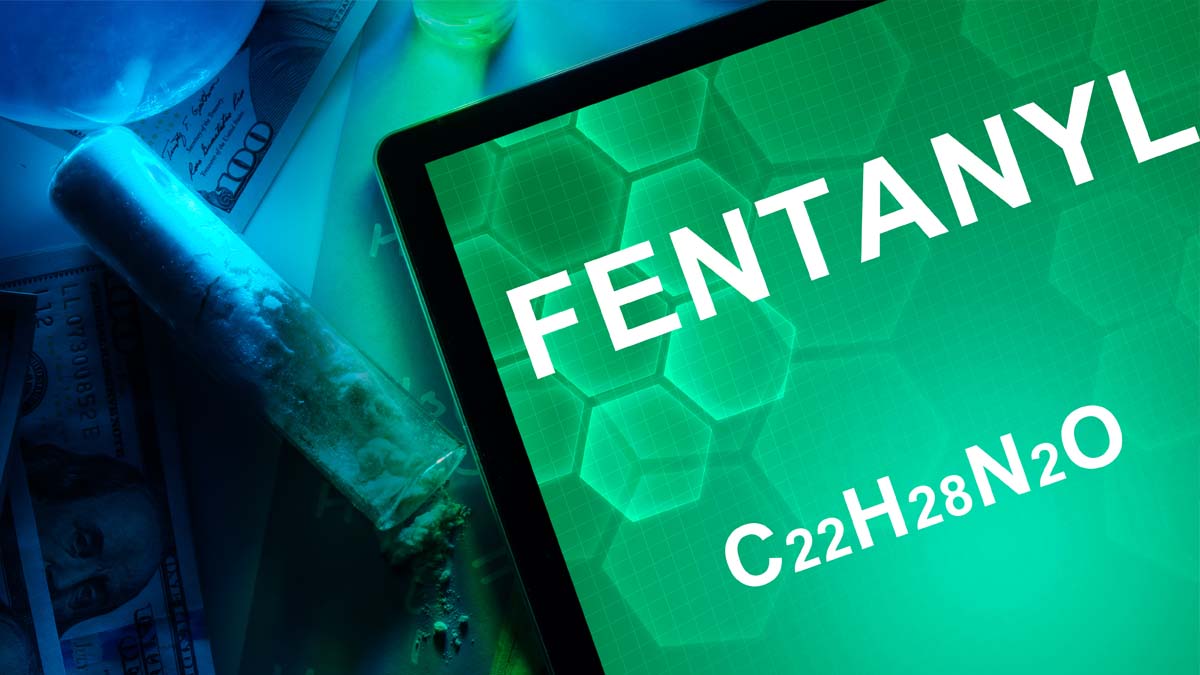(Editor’s Note – This story is the first of a three-part series about the fentanyl crisis in our community, our state and our country.)
It happened the week after he got home from a six-month stint overseas in the U.S. Air Force. Meeting up with friends, he was looking forward to getting high and having a good time. There was one girl in particular he was looking forward to hanging out with. She promised him that she had a connection and could supply him with cocaine. They met at a hotel.
The cleaning crew found his body the next day when he failed to check out. The cause of death was a fentanyl overdose. He was 23.
For another young man, it all started after his motorcycle accident. Dealing with chronic pain, he was fine when the doctor was prescribing him pain medication. But when the refill limit was reached and the doctor couldn’t renew the script, in desperation, the young man took to the streets and found a heroin dealer.
Some say it wasn’t his fault. He wasn’t an addict. He was just looking for pain relief. His girlfriend found his body in the garage. His cause of death was a fentanyl-laced heroin overdose.
And then there are the truly innocent ones: the children who find what they think are rainbow-colored candies unsafely stored by an irresponsible, drug-dealing adult. The “candies” are pills, and the pills are fentanyl.
There are countless stories like these: teens who think they are taking an attention-deficit/hyperactivity disorder pill given to them by a peer; the homeless who are knowingly taking it to find some respite from their reality; the seemingly normal celebrities duped into taking a substance laced with a deadly concoction of fentanyl and a drug that they are already taking.
Locally, in Charleston County, the Post and Courier reported on December 5, 2023 that cocaine laced with fentanyl and disguised as ADHD medication was found in a bathroom at Lucy Beckham High School in Mount Pleasant. The Charleston County School District said that the problem was not limited to just one high school, but that it was instead a “community problem” and one that many other schools in the area were dealing with as well.
A bag of fentanyl is usually just a tiny corner of a sandwich bag. Two grains, the size of two grains of salt, can be enough to overdose. People can snort fentanyl, take it orally, shoot it like an IV or skin pop it. Skin popping involves injecting the drug under the skin.
The National Institute on Drug Abuse says fentanyl is the most common type of drug involved in overdose deaths in the United States. Most people can get it for just $100 a day.
Fentanyl is up to 50 times stronger than heroin and up to 100 times stronger than morphine, according to the Centers for Disease Control and Prevention.
According to the Department of Alcohol and Other Drug Abuse Services in South Carolina, 42% of fake pills tested have at least 2 mg of fentanyl, which is a potentially lethal dose. The CDC reports that in the United States, 150 people die every day from fentanyl-related overdoses.
The DAODAS also reported that there are two types of fentanyl: pharmaceutical fentanyl and illicitly manufactured fentanyl. Both are considered synthetic opioids. Pharmaceutical fentanyl is prescribed by doctors to treat severe pain, especially after surgery and for advanced-stage cancer. However, most recent cases of fentanyl-related overdoses are linked to illicitly manufactured fentanyl, which is distributed through illegal drug markets for its heroin-like effect. It is often added to other drugs because of its extreme potency, which makes drugs cheaper, more powerful, more addictive and more dangerous, according to DAODAS.
Dr. Allen Jackson recently retired from Liberty Doctors but continues to work three days a week as a local methadone clinic director, which he has been doing for 20 years. He said that fentanyl is made in China and has come into the United States through Mexico. A fairly new crisis, the DAODAS reports that there were 71 deaths in South Carolina involving fentanyl in 2019, but in 2020, that number more than doubled to 144. The number was at 139 for 2021, and numbers are still being calculated for 2022, according to DAODAS.
The DEA put out a statement in the spring of 2022 with a warning. The warning stated: “Fentanyl is highly-addictive, found in all 50 states, and drug traffickers are increasingly mixing it with other illicit drugs — in powder and pill form — in an effort to drive addiction and attract repeat buyers. These mass-overdose events typically occur in one of the following recurring scenarios: when drug dealers sell their product as cocaine, when it actually contains fentanyl; or when drug dealers sell pills designed to appear nearly identical to legitimate prescriptions, but are actually fake prescription pills containing fentanyl. This is creating a frightening nationwide trend where many overdose victims are dying after unknowingly ingesting fentanyl.”
The warning went on to state that fentanyl is driving the nationwide overdose epidemic. The CDC estimates that in the 12-month period ending in October 2021, more than 105,000 Americans died of drug overdoses, with 66% of those deaths related to synthetic opioids like fentanyl. In 2020, the United States suffered more fentanyl-related deaths than gun- and auto-related deaths combined, according to the DEA press release.
“Let us be clear: These poisonings are part of a strategic maneuver by the cartels and it must be stopped,” the DEA warning stated.
The DEA is working diligently to trace mass-overdose events back to the local drug trafficking organizations and international cartels responsible for the surging domestic supply of fentanyl. The DEA continues to seize fentanyl at record rates. In the first three months of 2022, the DEA seized almost 2,000 pounds of fentanyl and one million fake pills, according to the DEA press release. In 2021, the DEA seized more than 15,000 pounds of fentanyl — four times the amount seized in 2017 — which is enough to kill every American>, the release adds.
According to Dr. Jackson, the problem runs deep and the solutions will not be easy to come by. He noted that these days, smoking marijuana is stronger than it ever was before and it is “absolutely a gateway drug to fentanyl and other opioids.”
He said, “90% of people that smoke weed become addicted to it.”
He noted that there aren’t many doctors working in opioid use disorder in the United States, even though the Cleveland Clinic noted that in 2022, 3 million people in the country suffered with OUD. The Cleveland Clinic also mentioned that 45% of heroin addicts started with the misuse of prescription opioids.
Dr. Justine DeCastro, president-elect of the Charleston County Medical Society and primary care physician at Harborside Healthcare, said that the incident at Lucy Beckham High School hit a little too close to home for her. She now advocates for the use of naloxone in schools and other public places. She even thinks it would be important to educate the public on having naloxone, also commonly known as Narcan, available in most homes.
Naloxone is a nasal spray that works directly to reverse an opioid overdose by blocking the effects of the drugs on the brain and restoring breathing. It can be bought over the counter in most pharmacies and many communities are now holding events where they give it away for free.
“There is a stigma though with Narcan and many people feel judged if they buy it at the store,” she added. “That stigma needs to go away.”
Besides the stigma, other barriers prevent people from getting help, such as the lack of funds to afford rehab; the time needed to get better and focus on their health; the community or the people around them that can hinder their recovery; the fact that to start methadone for detox, you have to be drug-free; and in many cases, people cannot go to rehab without a referral.
Some people are motivated by the law, of course, but in other places, like the state of Oregon for example, possession of minor amounts of drugs like heroin, cocaine and methamphetamine are treated like a traffic ticket, according to CNN.
“In Oregon, people caught doing drugs or possessing drugs will be given aid and assistance for addiction, not jail time,” Dr. Jackson explained.
Fentanyl testing strips, which are available at health departments throughout South Carolina, can be useful. Dr. Jackson recommends using those if you are unsure about the compounds you are thinking of ingesting.
Dr. DeCastro concluded, “There is definitely a disconnect in our community on realizing just how bad this problem really is. It isn’t going away anytime soon, and I actually see it getting worse before it gets better unless we start addressing the problem at home first.”
Small Steps in The Fentanyl Fight
- Be cautious of any medication, prescription or not.
- Keep your medications in a safe place and administer medications yourself to your children.
- Remember, any medications at schools must be registered and kept at the school office.
- Be cognizant of anyone who visits your home: kids’ friends, family members, babysitters, etc. Know where your kids are going and who they’re around, like older siblings, peers at their extracurriculars, friends’ homes, etc.
This isn’t an easy problem to talk to your kids about or get help with. If you’re worried your child has a problem with illicit drugs or prescription medications, reach out to the school, contact the physician or provider who wrote the prescription, or reach out to our local resources.
Source: Dr. Justine DeCastro, President-elect
Charleston County Medical Society
Primary care physician, Harborside Healthcare
By Theresa Stratford






